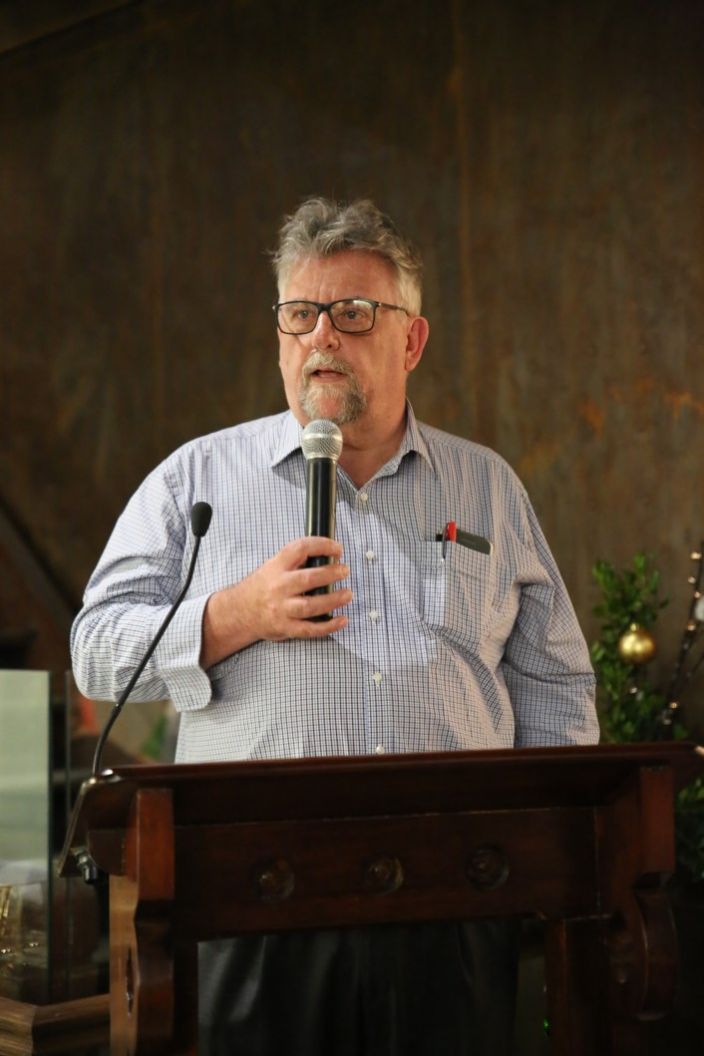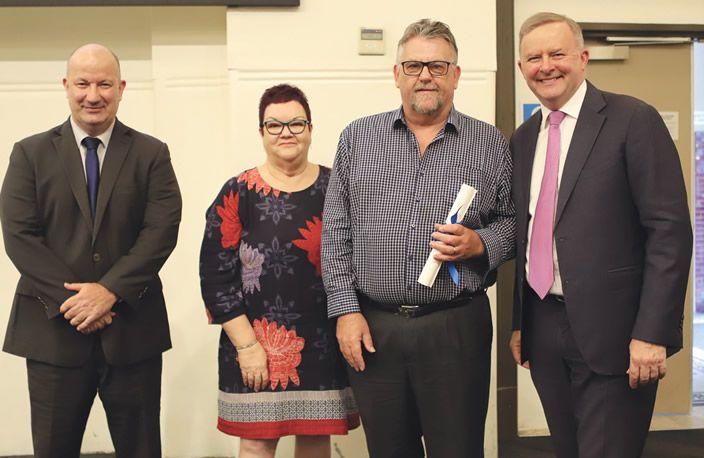
I attended the IEU Christmas party on 5 December last. Putting festivities aside, the principal item of business was to farewell John Quessy after a working commitment to the IEU spanning more than four decades, initially as a school delegate, then member of the Executive, then as President, and since 1995 as an employee. His career path through the IEU started as an Organiser, then appointed as Assistant Secretary to Dick Shearman, and in 2012 succeeding Dick as the IEU Secretary.
I recently had contact with the IEU over the length of my membership. John, ever the historian, established that I had joined the AMA (the initial name of the registered union) in February 1962, making me the longest card carrying member of the union. I first encountered John somewhere around 1972 – 73, when he was the union delegate at Pius X College, Chatswood. As I stood as one of 300 during the retirement speeches, I was blown away by the changes occurring during the nearly 5 decades John has been associated with the IEU.
Our first offices were in the corner of premises donated rent-free to us by Dominic Yates, who used the balance of the premises as a coaching college that he was running, specialising in maths. At the time he was the then President of the AMA. We graduated to our first rented premises, around 100sq meters, rented in the Wallace Way complex near Chatswood Station. John Quessy’s farewell celebration was held in a three storey building, owned and paid for by the IEU, plus basement parking strategically located on the east-west and north-south corridors of Sydney in Wattle Street, Ultimo. And to complete this contrast, the union also owns premises at Parramatta, Canberra, Newcastle and recently purchased office space in Lismore.
In 1977 when I finished my term as Secretary, there were two full time (including Michael Raper, our then first organiser) and two part time employees (membership/accountant and office secretary). Today there are 67 employees on the union payroll, all enthusiastically working, advancing some aspect of benefit to a membership in excess of 30,000, a far, far greater number than the 1200 membership in 1977. My farewell was a quiet affair, a drink in a nearby pub; John was farewelled by more than 300 members, employees, partners, and friends crowded together in the Wattle Street vestibule.
John’s time with the union has also seen expansions of capital expenditure items over and above real estate. In a southern corner of the Wattle Street building’s first floor is the front 30 centimeters of the very first item of capital expenditure, a two-tower, six drawer desk owned by the ITA (as it then was). It was the Secretary’s desk purchased at a government auction for $25. The IEU capital investment today is measured in five work sites, as well as furniture, IT technology, and motor vehicles for those sites.
Governance of the union, and communication between union and the membership is far more complex today than it was in those early days. The scope of the union’s coverage has changed radically – one award covering teachers, including preschool teachers, has been replaced by numerous work place agreements. Membership is no longer confined to teaching staff, but includes a wider scope of non government employees. A regular bulletin, Newsmonth, keeps membership up to date on union matters, and professional development is better addressed than was the case in years past, when articles were published in Independent Education, circa 1975, a small notebook sized journal published two or three times yearly. By contrast the IEU of today is involved in a far more sophisticated way with industrial, professional and other services aimed at making members' money do more. First among those services is the Independent Teachers’ Superannuation Scheme.
Do not think the early years were unimportant. They were important in that they mark the initiation within the non government school and preschool sector of institutionalised social justice, particularly through wages, career structure, and professional development. Those years were spent building a foundation. The years of John Quessy, first as a member of the Executive, and then as a key employee within the IEU were spent putting a structure upon those foundations and expanding the membership base so that the benefits of IEU accomplishments could be shared more widely.
John was not the only player – but he was a key player who ultimately became the leader of the IEU. That is his great accomplishment and he is to be warmly congratulated upon these many, many years of contributions. As it was with the 300 others present, so it was with me – I was impressed, proud of his achievements, and hoped his retirement would be long, enjoyable and fulfilling.




































































































































